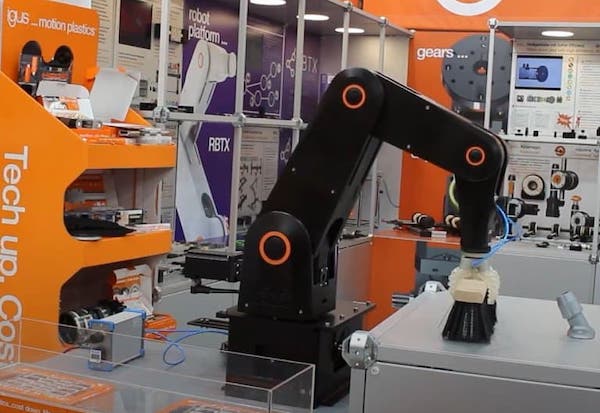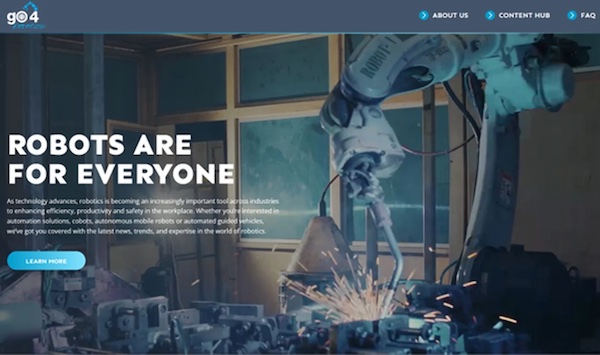Labor shortages have become one of the most pressing challenges for small and midsized enterprises in member nations of the Organisation for Economic Co-operation and Development, or OECD. The International Federation of Robotics last week announced Go4Robotics, a new online platform to provide independent guidance in manufacturers' journey to automation.
“The lack of skilled labor is a strong driver for automation in many countries,” said Dr. Susanne Bieller, general secretary of the International Federation of Robotics (IFR), in a release. “In fact, statistics from the EU say that three quarters of all companies across the EU have a problem attracting workers with the required skills.”
Retiring baby boomers, immigration restrictions, and shifting expectations among younger workers have been a common refrain in developed economies, but robots are only part of the solution. The IFR and other industry advocates asserted that business, government, and academia should make retraining and reshoring higher priorities.
Robots to augment and recruit workers
According to a study last year by Veo Robotics, 57% of manufacturers aren't worried about robots taking jobs but rather about finding ways to augment their existing workforces.
“A people-centric approach to digital transformation ensures manufacturers have a workforce that is prepared to thrive alongside robots and automation,” wrote the National Association of Manufacturers in its “Top 8 Manufacturing Trends for 2023.”
Several organizations have observed that not only can robots and automation help small and midsized enterprises (SMEs) be globally competitive, but the technology also can also provide incentives for recruitment and retention.
“Given a choice, many young people prefer to work in a company that uses future technology,” said the IFR. “If there is a robot operating on the shop floor, the employer can advertise a job to prospective employees as work that involves controlling a robot. This is oftentimes a game-changer.”
“Since the robot takes on the four “Ds” of dull, dirty, dangerous and difficult work, their use is even more attractive,” it added. “Employees have more time to skill up for more interesting jobs.”

Groups work to change perceptions, offer retraining
Attitudes toward manufacturing are changing, but not fast enough for industry. According to a survey last year by Deloitte and The Manufacturing Institute, nearly 45% of manufacturing executives said they have turned down business opportunities because of a lack of workers.
The study said that most workers prefer jobs in sectors such as retail, services, and technology, even as the amount viewing manufacturing as innovative has increased from 39% to 64%. If public-private partnerships present manufacturing as high-tech and invest in training, as Forbes recommended, that positive perception could spread.
North America, Europe, South Korea, and Japan might not be able to compete with China in terms of the size of their labor pools or centralized economic and technology policies. However, they can strategically develop and deploy both workforces and labor through initiatives such as the ARM Institute's RoboticsCareer.org and Amazon's Mechatronics and Robotics Apprenticeship program.
The U.S. Alliance of Robotics Clusters has also set onshoring as a priority. Its members—MassRobotics, Silicon Valley Robotics, and the Pittsburgh Robotics Network—have all pursued their own workforce development initiatives.
Reshoring and nearshoring
After trade conflicts with China, the COVID-19 pandemic, and other supply chain challenges, the U.S. and other countries have encouraged the production of automobiles, processors, and other goods closer to home. The CHIPS Act and Build Back Better Act have directed federal funds to reshoring for the computer and infrastructure industries, respectively.
More than half of U.S. manufacturing CEOs said they intended to reshore some production, found a survey conducted by Xometry with Forbes and polling firm John Zogby Strategies. At the same time, “nearshoring” efforts will also add automation and jobs.
“In fact, we're more likely to see nearshoring to places like Mexico than just reshoring to the U.S.,” Jeff Burnstein, president of the Association for Advancing Automation (A3), told Robotics 24/7. “It's already happening.”
Go4Robotics intended to raise awareness
The IFR said Go4Robotics is intended to raise awareness of robotics' potential benefits. The platform includes educational content and a checklist for SMEs.
Experts have dispelled myths about segments that are relatively new to automation, said the IFR. Managers can learn how to benefit from new trends like easy-to-program robots for non-experts, the IFR noted.
Robotics-as-a-service (RaaS) business models can also help SMEs with the costs of adoption and management of robot fleets, said industry experts.
“With our Go4Robotics campaign, we want to provide beginners with easily accessible and understandable information and experts with deeper insights into trends and innovations in the robotics industry,” the IFR said.
As a non-profit organization, the IFR said its mission is “to promote the use of robotics to address societal challenges and improve the quality of life for all.”
About the Author
Follow Robotics 24/7 on Linkedin
Article topics
Email Sign Up

















